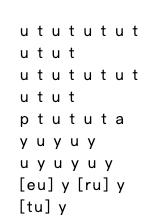Roblox Sheet

Roblox Sheet
Interstellar: Main Theme
Hans Zimmer
Experience Interstellar: Main Theme by Hans Zimmer in a whole new way! Use your keyboard to play Interstellar: Main Theme Roblox Piano Sheets on the Virtual Keyboard Piano. Whether you're a Roblox piano game player or want to practice classic pieces, this Interstellar: Main Theme Roblox Piano Sheet is perfect for you, making it easy to progress from beginner to expert. Interstellar: Main Theme is featured in the TOP 100 Roblox Piano Sheets, along with many other easy, classical , pop, Christmas songs, and Disney collections for you to playing!
64 views



















